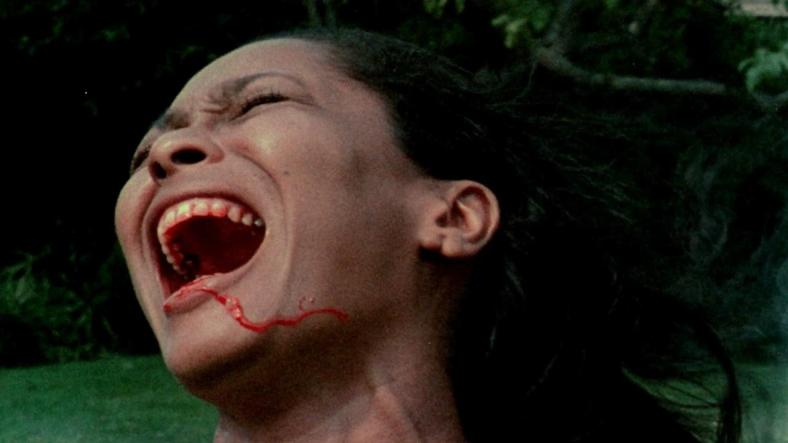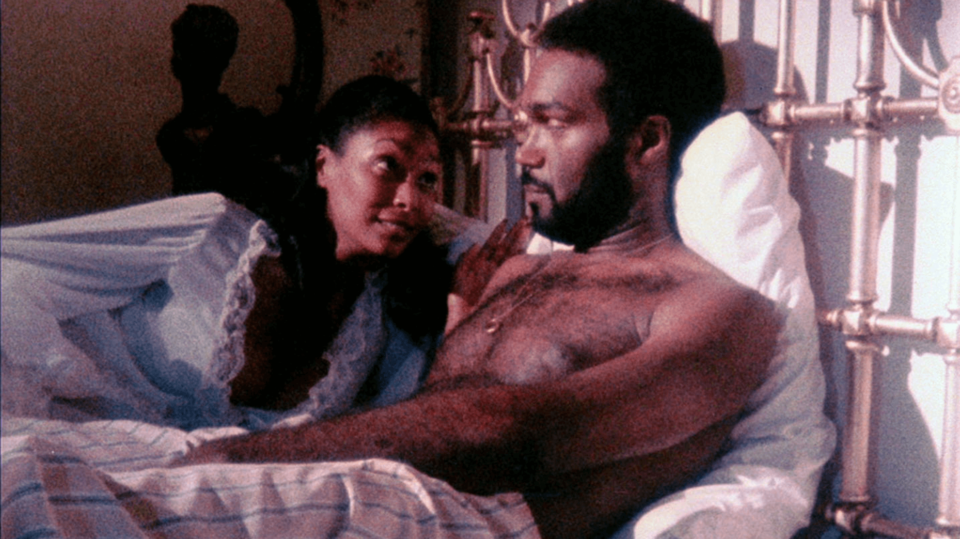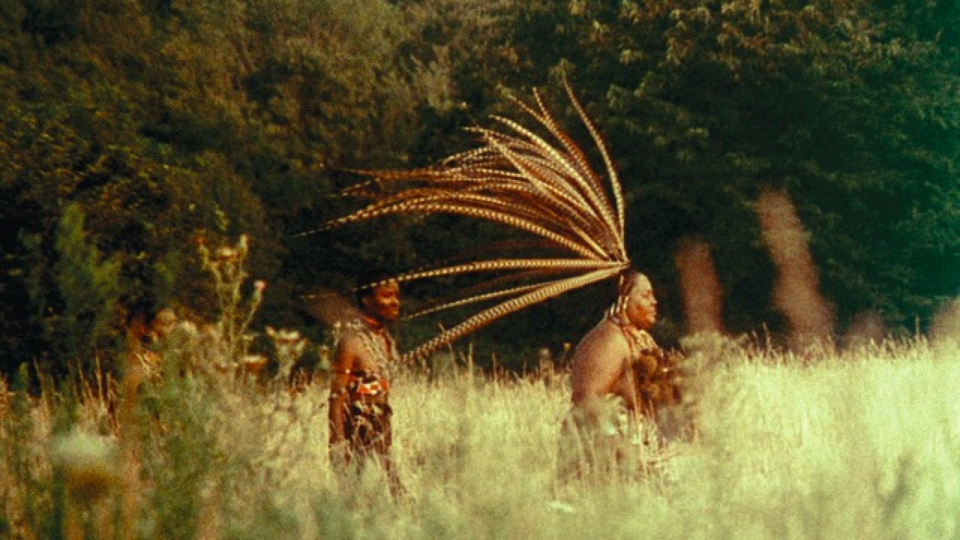Black Monstrosity as Power: An Examination of ‘Ganja & Hess’ And ‘Atlantics

Ganja Meda: [after becoming dependent on blood] Why am I always cold?
Dr. Hess Green: [quietly] I don’t know.
Ganja Meda: Are you always cold?
Dr. Hess Green: Uh-hm.
Ganja Meda: What have you done about it?
Dr. Hess Green: Grown used to it.
Directed by Blaxploitation star Bill Gunn, Ganja & Hess is a dazzling fever dream of a film. The ‘curse’ of vampirism is returned through an ancient African blade, making Hess (and later Ganja) into immortal blood-sucking beings. But, like more traditional renderings of vampires, they can walk in the daylight with no issue. While Hess views this newfound state as abominable, only sharing it out of a twisted love/loneliness, Ganja sees it as a route to power she had only dreamed of. In this dichotomy, Gunn creates one of the earlier instances of the idea in Black horror films that monstrosity was not a thing to be denied but actually a way to access freedom. In short, horror could serve as a sort of power fantasy.
The appeal of immortality to Black America in the early 1970s is clear as day. MLK was dead. Malcolm X was dead. Black men were being shipped off to the dirty work of the American state in Vietnam and dying in droves. Since the creation of Blackness as a category by which people are oppressed, Black life has always been treated as extremely disposable. What if they couldn’t do that? What if they couldn’t kill us? What if the bullet lost its bite? What if we didn’t need the air that they are so determined to choke out of us?
For Ganja, these questions are more pressing. She doesn’t have the great manor through which Hess could distance himself from the struggles of proletarian Blackness. She also can’t access the gendered power which allows him to take space (albeit precariously) in hallowed institutions and be persistently respected. After all, she only really ends up in Hess’s manor because her husband’s ‘disappearance’ leaves her with no options. It is notable that the other Black woman in the film with real screen time is also deeply tied with a violent man—her pimp. Without that access to vampiric dark power, there is no coming back for her when she is killed by Hess.

There’s also a specific pan-African/anti-colonial power in embracing the curse which has been condemned by Western Christianity. The fever-dream feeling of the movie is permeated with African drums and chants, along with visions of (implied) ancestors from this powerful long-dead society. Liberation is found by embracing the horrific—not running away from it.
This through line of drawing strength from monstrosity is persistent in contemporary Black film as well. Nia DeCosta draws on this heavily in her Candyman sequel. Here, the titular villain is understood as less of an antagonist and more of a dark embodiment of Black working-class anger. From the hook hand to the impressively gross makeup, Yahya Abdul-Mateen II’s Anthony becomes embedded in monstrosity. He becomes something too aberrant to be consumed, contained, or destroyed by these white supremacist structures.
Notably and deliberately, every person killed by him in the film is white and monied. I don’t think this entirely lands in the film itself, which ends up doing a lot of talking about the emotions and economic position of Black working-class people, while never actually ever focusing on them as individuals rather than a rhetorical point. Nevertheless, the ideas within are still interesting, and the through line remains.
That line can also be seen in Mati Diop’s Atlantics. In this Senegalese film, a group of construction workers who haven’t been paid for months set sail for Europe to find something better, but are caught up in the vast ocean and perish. Soon after their spirits come to haunt the businessman who shorted them of their cash.

We live in a world where there is no justice for people like the men whose deaths haunt the film. Exploitative businessmen who exploit young and precarious laborers are too rich to be meaningfully challenged through most conventional institutions. The same goes for the European nations who rely on undocumented migrant labor while providing no safe route for their arrival, all while being key to the past and present colonialism which forces people onto shoddy crafts. There is no justice being done for the people lost; just new Black bones joining the old at the bottom of the ocean, which is everpresent and striking in this film.
However, when possessed by the ghosts in Atlantics, these women have more power to avenge their loved ones than they ever could have had otherwise. Main character Ada gets the closure that she needs. She’s also liberated from the loveless marriage she was pressured into because of the economic realities as of herself and her family. You can’t bribe a vengeful spirit. If it wants to set a matrimonial bed alight the best you can do is douse the flames and hope it doesn’t return again. It won’t waiver, or falter until justice has been done.
This embrace of African spirituality establishes a firm power outside of the shadow of the cross for people (and especially women) who have been persistently failed by the violently enforced Western ideological and spiritual systems. Crucially within this, there is a reclamation of Black female sexuality, with the most visually powerful scene of both films being a sex scene that is steeped in this mysticism.

In Atlantics, this scene comes with Diop’s haunting use of lighting and the sound of the ocean which is foundational to the spiritual power in the film, as the visuals switch between Issa (the possessed man played by Amadou Mbow) and Souleiman (the spirit of her drowned lover played by Traore). For Ganja & Hess the fever dream love-making feels comes through a hazy lens as the vampiric urges (expressed in the chants and music) combined with the blazing red scratches and burning desire. For both of these women, sexual freedom comes through this newfound dark power.
By the end, when Ada defiantly declares herself to be “Ada to whom the world belongs”, she has risen not through the divinity of the colonial church, or the exploitation of capitalism, but instead by claiming the profane. When Brianna Cartwright (Teyonah Parris) frees herself at the end of Candyman, it didn’t come through awards won in white galleries, or leveraging her class position. It came through submitting to the necessary basic violence required at the moment. Ganja takes her place as the lady of the manor at the end of Ganja & Hess by rejecting the final death offered through the cross. Instead, she decides to stay on this earth, cold and monstrous but ultimately free.
It’s not easy to reject humanity. It’s not like any of these characters go on to live completely easy and stress-free lives. However, what this strand of Black horror tells us is that if we reject whiteness-centered notions of humanity there is a power to be found. We can break beyond some of the limits enforced upon us and become something new entirely.
Categorized:Editorials News

